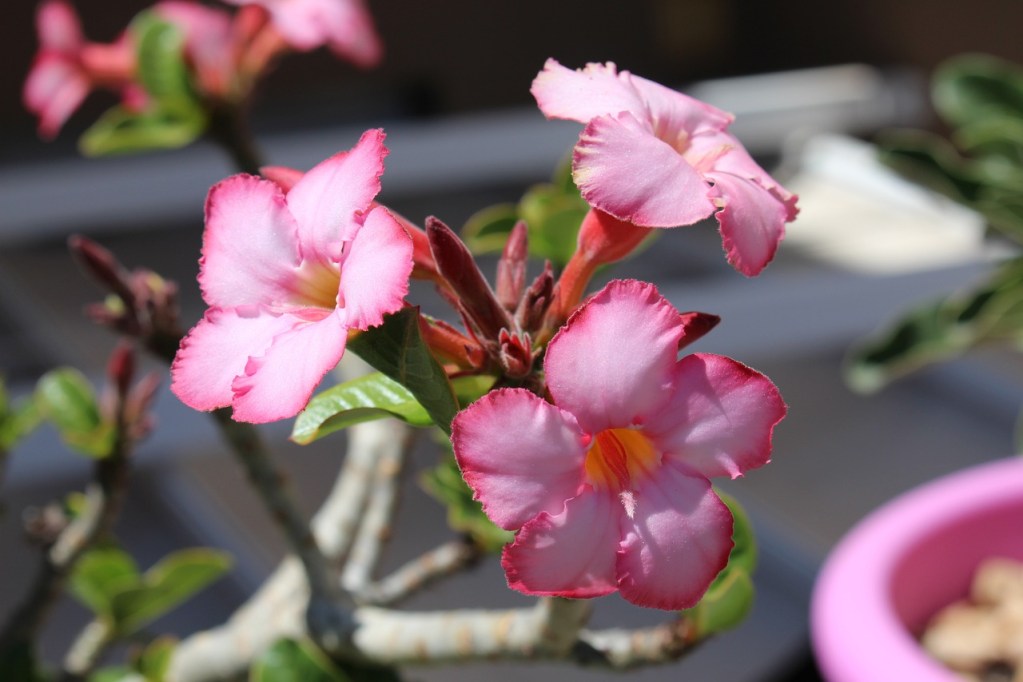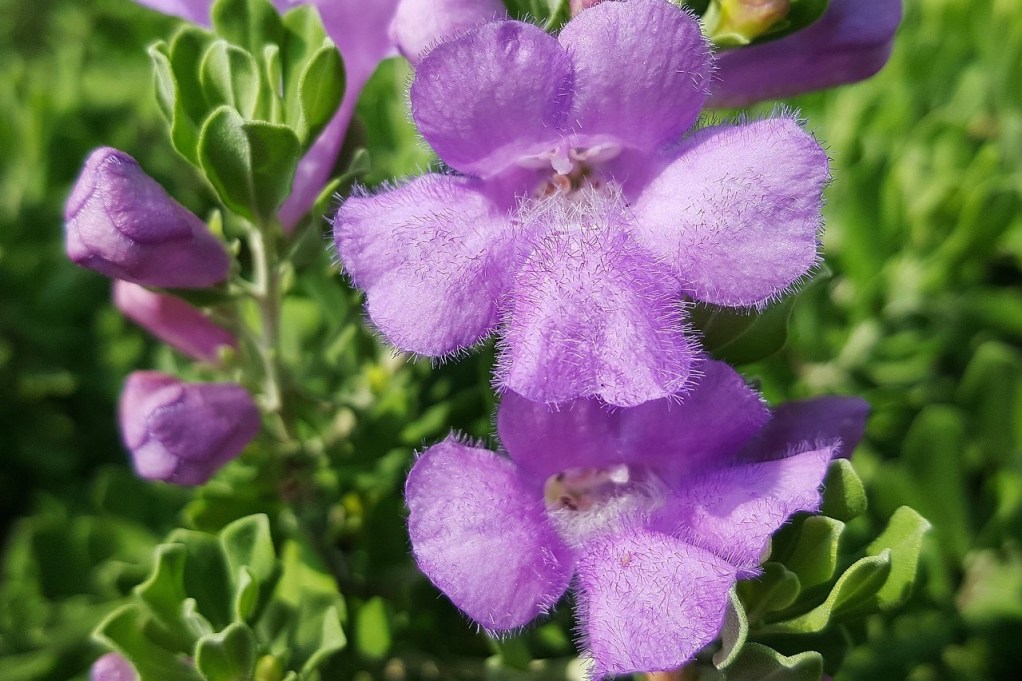Some people may imagine deserts as barren wastelands, but that’s not quite the truth. There are actually plenty of plants that are adapted to hot, dry climates. These plants can have thick leaves or stems that can store water, or they might spend a lot of time dormant while waiting for the next burst of rain.
Desert plants, including most types of cacti, are varied and beautiful. If you live in a desert climate, growing desert plants makes gardening and landscaping much easier. To help you get started, here are our favorite desert plants that you should try growing.
Desert rose

Adenium obesum, more commonly known as a desert rose, is a gorgeous flowering succulent native to Africa. You should take care when growing this plant if you have pets or young children that sometimes get into things they shouldn’t, as desert roses are poisonous. Like most desert plants, desert roses are quite drought tolerant. To keep your plant looking fresh, water it every couple of weeks. Be sure to let the soil dry completely before watering it again, though. Plant your desert rose in full sun, and grow it in a container if you live north of zone 11. These plants aren’t cold tolerant.
Agave

Agave is a varied and hardy genus of succulent native to the American deserts. From the massive Agave salmiana to the much smaller Agave pintilla, this lovely plant is known for thick, fleshy leaves and tall flower stalks that appear rarely. Plant your agave in full sun to partial shade, and make sure it’s in well-draining soil. Agave plants don’t need much watering, and they can handle long droughts. If you want to water your agave regularly, once every week and a half to two weeks is enough, and be sure the soil is dry before you water it.
Canyon senna

Canyon senna (Senna wislizeni) is a lovely native shrub. If you want to add a pop of color to your desert garden, then canyon senna should certainly be on your list. With gorgeous bright yellow flowers and tiny dark green leaves, this shrub is perfect for bringing color and joy to any dry, rocky garden. Pollinators also enjoy their flowers. They can grow quite tall, so be sure to give them plenty of space, and plant them in full sun. As a desert plant, canyon senna is fairly drought tolerant, but it will bloom less during prolonged droughts. To keep this shrub flowering from spring to fall, water it every week to every other week.
Chuparosa

Chuparosa is another plant to consider if you want color in your desert garden, especially if you want to attract pollinators. These gorgeous shrubs are also called hummingbird bushes, primarily because their bright red tube-shaped flowers are a popular food source for hummingbirds.
They are native to the Sonoran desert in the southwest of the U.S., which puts them right in the migration path for rufous hummingbirds. Plant your chuparosa shrub in full sun, and water it regularly until it is established. Once established, it only needs a deep watering once a month. Before long, you’ll see tons of red flowers and hopefully a few hummingbirds, as well.
Cholla

Cholla cacti are not for the faint of heart, but they are beautiful, native, and hardy. Their spines can make it difficult to care for nearby plants, so they are better suited for a more open garden plan where they can have room to themselves. Cholla cacti are branching, resembling tiny trees or shrubs, and have thin spines all over that grow so thickly they resemble fur.
While not suitable for gardens often frequented by children, cholla cacti are perfect for a more hands-off gardener. With lovely flowers that are commonly pink or yellow, these hardy desert plants will thrive as long as they have plenty of sun and warm weather. Adapted for long droughts, cholla cacti appreciate a monthly watering.
Texas sage

Texas sage is yet another beautiful flowering shrub adapted to deserts. With silvery leaves and purple flowers, Texas sage resembles true sage — although it doesn’t taste the same. Texas sage is bitter and inedible, making it better suited to an ornamental garden. Pollinators will still enjoy it, however. Like most desert plants, it is incredibly drought tolerant and will only need occasional watering once established. Texas sage is also a great plant if you want to grow a hedge to border your yard or create sections in your garden.
These desert plants are perfect for any gardener living in the hot, dry Sonoran desert. Some can even grow indoors (although you may want to skip adding cholla to your houseplant collection). Whether you want something simple and low maintenance or something bright and beautiful, the desert has options for everyone. Where other plants struggle to survive and may need a lot of extra work to grow, these desert plants will thrive.




